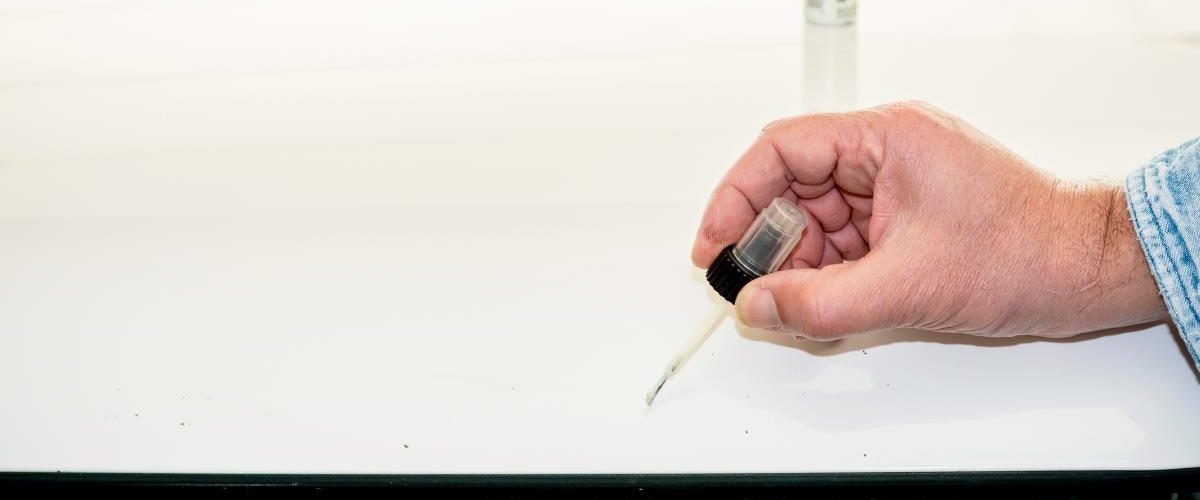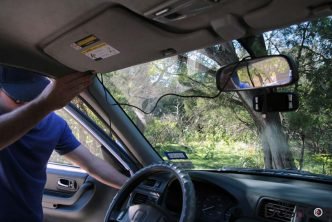Car paint touch-ups can be a fast and simple way to mend minor scratches or chips on a vehicle’s body. The entire process can actually be completed in less than three hours, only requiring a few items, such as sandpaper, paint, and soft rags.
Of course, the project could be longer, depending on the extent of the damage you’re trying to fix. Bigger and deeper blemishes would also require additional materials, including a block sander, rubbing compound, clear coat paint, a cotton cloth, and more—all of which are included in a specialty kit you can purchase in most auto shops.
Table of Contents
Research and t he Touch-Up Paint Process
Before beginning any touch-up job, it is important that you do some research first to ensure success. There are many car paint options available, but it is recommended that you settle for a car touch-up paint pen, which works best for small blemishes.
Additionally, your choice of paint color can prove to be challenging, especially if you’ve never done this before. With numerous shades available on the market, it’s pretty easy for anyone to choose the wrong color or shade that would blend well with your car’s paint job.
Common Problems in Touch-Up Jobs
There are several common touch-up paint mistakes that people should be aware of before they work on their cars. These include the following:
- Over-Confidence
Many car owners think that they can finish the job on their own but may run into bumps along the way. This is understandable since touch-up work often involves a fairly simple process. Nevertheless, if you encounter issues, it’s best to bring the vehicle to a professional auto body shop.
- Excessive Sanding
This is another common problem in many touch-up jobs. Often, due to over-eagerness, people may sand more than necessary, leading to more damage to the car’s body. In short, instead of getting a minor problem fixed, things end up getting worse.
- Corrosion
There is this persistent belief that a touch-up paint can get rid of car rust. This is simply not true, and if you’re among those who believe in it, you’re in for a major disappointment.
- Incorrect Car Paint Color
Since touch-up work is usually for small car dents, it’s crucial that you get the correct paint color. If you end up using the wrong shade, it will render the job unsuccessful as the dent’s color will be noticeable since it’s obviously different. In the end, you’ll have a bigger damage to fix which should already be brought to car experts.
The Touch-Up Paint Process
Below are the steps you can follow if you’ll do a touch-up paint on your auto.
- Damage Assessment
Before doing the touch-up job, the damaged area should first be identified and examined. Use a flashlight if the damage can’t be seen clearly. Mark the affected area or portion using a masking tape.
- Surface Cleaning
The car’s surface should also be thoroughly cleaned before the touch-up. Cleaning means washing the entire vehicle with clean water, including the damaged portion. It is advised that this be done twice, according to an auto body shop in St. Petersburg, FL, with the second round involving the use of a strong spray system. End the cleaning by drying your car using a clean and thick towel.
- Sanding
Prepare the affected area for painting by sanding it well. After sanding, a cotton swab and general-purpose automotive paint thinner should be used to clean the damaged area. This will also help the touch-up paint to adhere well.
- Touching It Up
A car touch-up paint pen or fine-tip paintbrush can be used to apply a base coating to match your car’s original color. If you’re dealing with deeper dents or chips, the paint should be built up step by step, letting each layer to dry completely before applying the next.
- Finishing the Job
Once the base coat has fully dried, apply a clear coating on the target area to finish your touch-up work. The paint should be allowed to dry and harden for at least two days. Afterwards, a car polish compound can be used to give the painted area and even the entire car a glossy new look.
Key Takeaway
Car paint touch-ups are quick and easy ways of fixing small dents or chips on your car’s exterior. Although this is something that you could probably do on your own, don’t be surprised if you encounter a few issues while completing the job. This should be expected, especially if it’s your first time doing a touch-up.
The key is to determine quickly if the problem is something you can still handle. If not, it’s always best to take your car to a reliable auto repair shop as soon as you can. There’s nothing wrong in seeking the help of professionals. With them in charge, you have a better chance of getting the best touch-up paint job results for your automobile.





